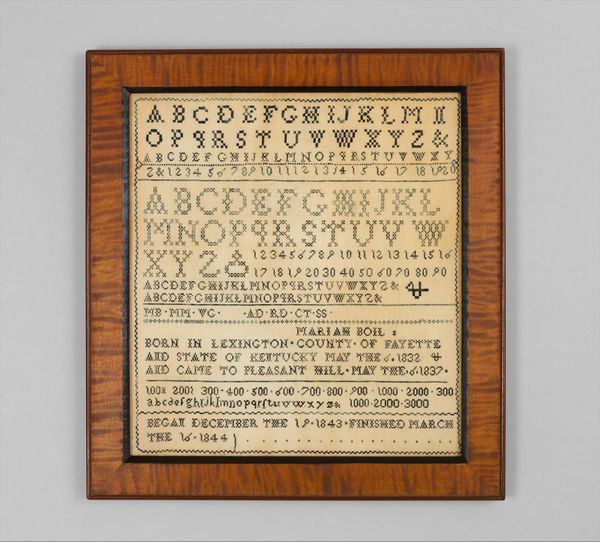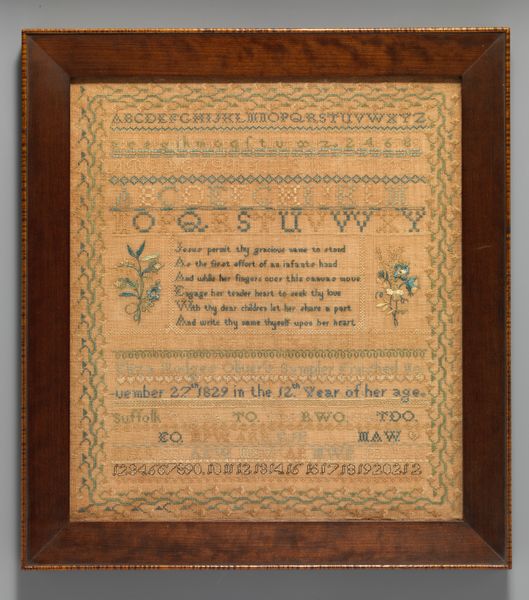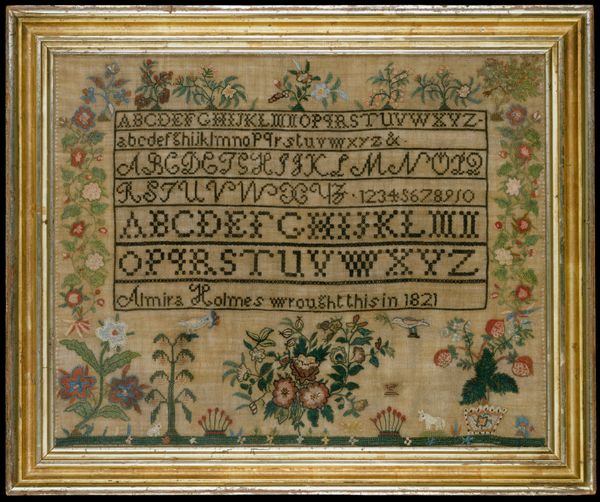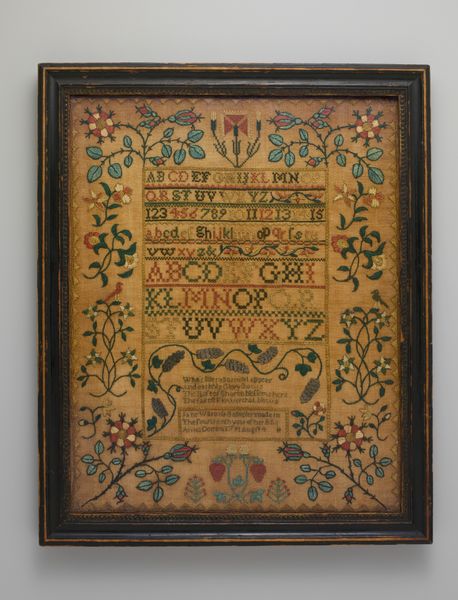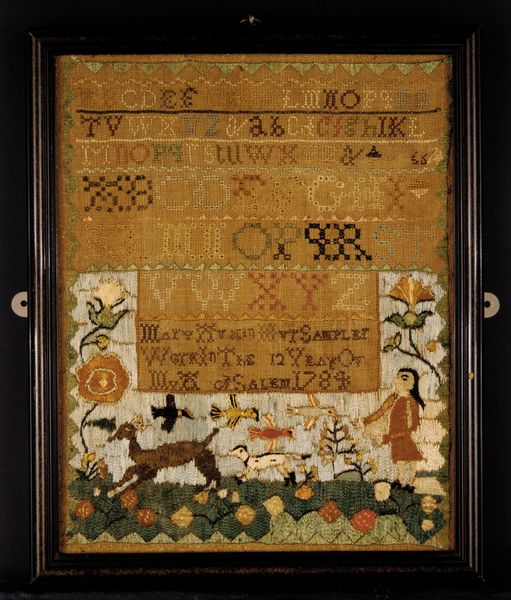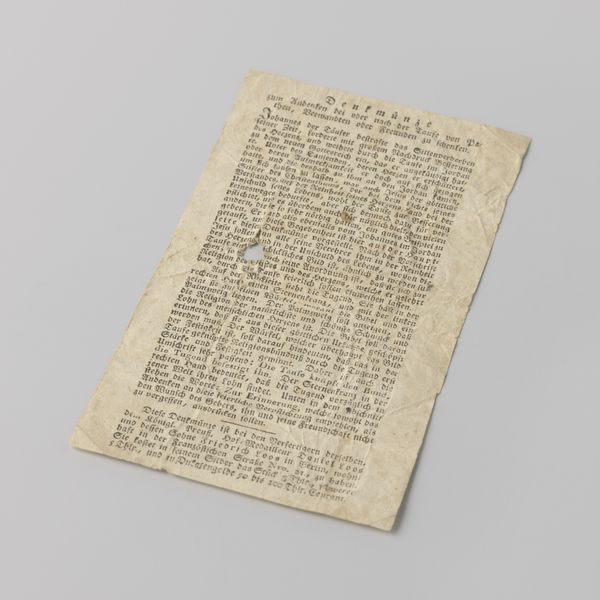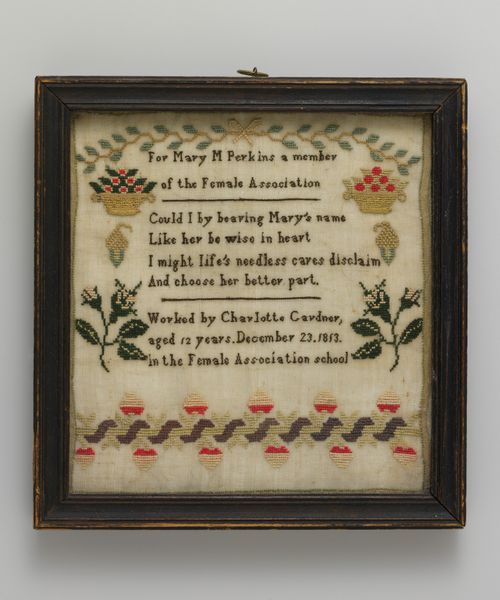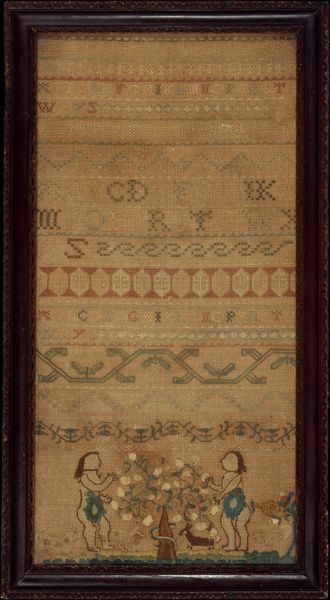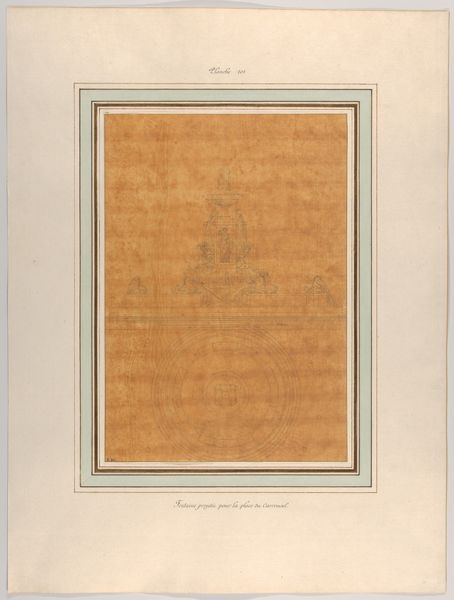
drawing, textile
#
drawing
#
textile
#
folk-art
#
geometric
#
warm palette
#
united-states
#
pattern repetition
#
miniature
Dimensions: 17 × 17 1/2 in. (43.2 × 44.5 cm)
Copyright: Public Domain
This sampler was made by Mary Elizabeth Morse in 1840, using linen and cotton thread. What we see here is more than just needlework; it's a window into the world of a young woman in 19th-century America. The alphabet and numerals, carefully stitched in neat rows, tell a story of education and skill-building. But look closer, and you'll see a passage describing New York. This demonstrates her knowledge of geography and history. The process of creating a sampler like this was time-consuming, requiring patience and precision. It reflects the values of hard work and discipline, virtues that were highly prized in that era. In a time before mass production, such hand-made items carried a special significance. They represented not just utility or decoration, but also the personal investment of the maker. By appreciating the material and the making, we recognize the depth of cultural meaning embedded within the artwork, elevating it beyond a mere craft object.
Comments
No comments
Be the first to comment and join the conversation on the ultimate creative platform.
